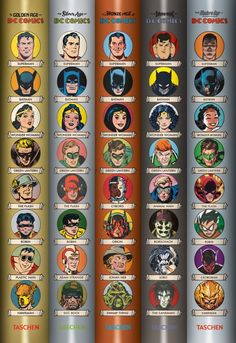By: Henry Hanks, Contributor @hankstv / tvshenry@gmail.com
If you're new to collecting comic books, you'll hear terms like "Golden Age" and "Silver Age" tossed around a lot. Here's a rundown of each of the "ages" of comic book history:
Golden Age
This era in comics launched in 1938 with the first issue of "Action Comics," which heralded the arrival of superheroes (with Superman's first appearance).
There had been comic books for a few years prior to '38 but Superman started a boom in comic book sales that has rarely been matched since.
The golden age saw the introduction of many of the DC Comics characters we know now, like Batman, Wonder Woman, and even a few Timely Comics characters you may have heard of like Captain America, Bucky (now Winter Soldier), The original Human Torch (before Johnny Storm of the FF took on the moniker, the original Human Torch was an andriod), and The Sub-Mariner.
Sales slowed down after World War II, but picked up at the start of the...
Silver Age
In 1954, DC rebooted the Flash in "Showcase" #4, giving him a new costume and the new identity of Barry Allen.
Early on in the 1960s, the Silver Age saw another superhero boom with Marvel Comics' "Fantastic Four" #1. This book began a wave of new characters from Marvel, such as Spider-Man, the Hulk, Iron Man and the X-Men. The silver age certainly cemented "super-heroes" in American pop culture for decades to come with the introduction of characters that we seem to see almost weekly debuting (and dominating) on the big screen.
Bronze Age
This era is generally considered to have begun in the early 1970s, ending DC's campy comics and taking a more serious turn.
Marvel Comics had always been socially conscious, and became even more so with the rebooted X-Men in "Giant Size X-Men" #1.
DC's "Green Lantern/Green Arrow" tackled topics like drug abuse and racism, while the "Batman" books took a much darker tone with Dennis O'Neil and Neal Adams at the helm.
The bronze age may not have cemented comics as future movie stars, but it certainly served to show that comics could be serious literature, and thus weren't just for kids anymore. This would prove essential as the medium matured.
Copper Age
This is a much shorter era, beginning around 1984 and ending around 1991.
This era saw another big shift in comics, with Alan Moore and Frank Miller setting the tone, with the gritty "Watchmen" and "The Dark Knight Returns."
While this era may not have lasted as long, it certainly contributed to the success of the medium, and is directly responsible for the sales boom we saw at the beginning of the.....
Modern Age
From 1991 to today (I guess we've ran out of "ages" to label), we've seen the start of Image Comics, the death of Superman, the rise of superstar creators like Geoff Johns and Brian Michael Bendis and more.
Only time will tell how this era is seen in the annals of comic book history.

